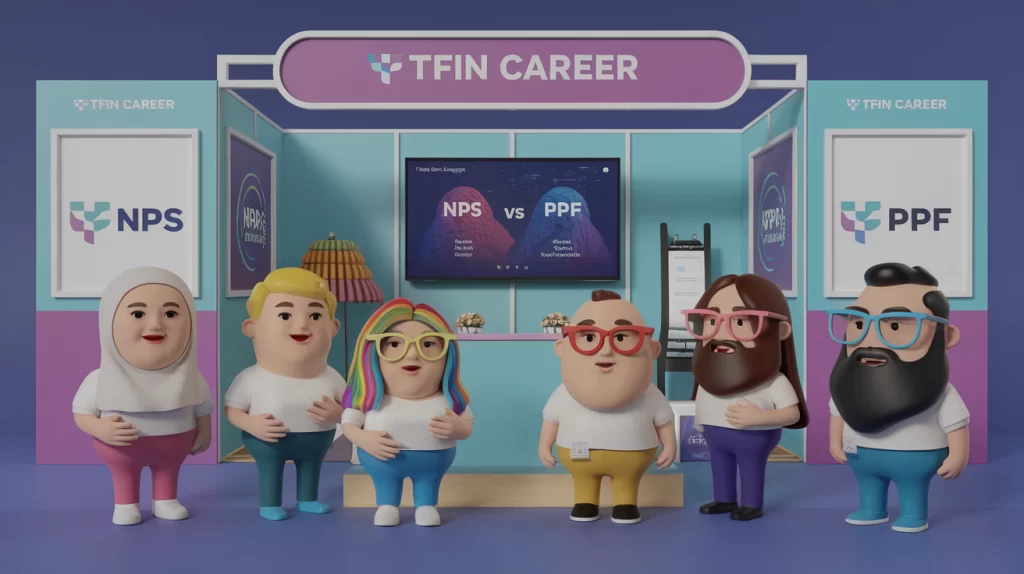NPS and PPF: Which Retirement Plan Should You Choose for Financial Freedom?
Introduction
When planning for those golden years, the right retirement plan can feel like a task. After all, you want to ensure your future self is well taken care of! Enter the superheroes of retirement savings: the National Pension System (NPS) and the Public Provident Fund (PPF). In this article, we’ll dive deep into both options to determine which plan gives you the best chance at financial freedom.
1. Understanding NPS (National Pension System)
1.1 What is NPS?
So, what’s the deal with NPS? It’s essentially a retirement savings scheme established by the Government of India aimed at helping employees save for their retirement. Managed by the Pension Fund Regulatory and Development Authority (PFRDA), NPS allows you to invest in various financial instruments, giving you a little flexibility in your retirement planning.
2. Understanding PPF (Public Provident Fund)
2.1 What is PPF?
Now let’s pivot to the Public Provident Fund (PPF). Initiated in 1968, this scheme is designed to encourage savings among the public and is backed by the Indian government, making it a secure option for retirement planning.

3. Key Features of NPS and PPF That Make PPF Attractive
| Key Features of NPS | Key Features of PPF |
|---|---|
| Options for investment across equity, corporate bonds, and government securities | A lock-in period of 15 years |
| Tier-I account is mandatory for long-term savings, while Tier-II is a voluntary account | Fixed interest rates announced yearly by the government |
| Transparency in operations with online tracking | Partial withdrawals are allowed after 5 years |
4. Benefits of Choosing NPS and PPF
Now, let’s chat about the perks of going down the NPS and PPF route.
| Benefits of NPS | Benefits of PPF |
|---|---|
| Tax Benefits: Under Section 80CCD, you can deduct investments up to ₹1.5 lakh from your taxable income. Plus, there’s an additional deduction of ₹50,000 if you put money into the NPS! | Guaranteed Returns: Unlike NPS, PPF offers guaranteed interest on your savings, ensuring you know exactly what to expect. |
Flexibility: Unlike traditional options, NPS allows you to pick and choose your investment strategy. You can adjust your portfolio based on your risk appetite and market conditions. | Tax Benefits: Under Section 80C, contributions to PPF are tax-deductible. Plus, the maturity amount is tax-free! |
| Long-Term Growth: NPS is great for folks looking at long-term retirement planning since it typically reaps the rewards of compounding over time. | Government Backing: As a government-backed scheme, PPF is safe from market fluctuations. |
5. Drawbacks of NPS and PPF
Of course, it’s not all sunshine and rainbows.
| Drawbacks of NPS | Drawbacks of PPF |
|---|---|
| Uncertain Returns: Since it’s linked to market performance, your returns can vary. You could have a fantastic year or one that’s pretty disappointing. | Lock-in Period: You’re in it for the long haul, as PPF has a 15-year lock-in period. Not the best choice if you need liquidity. |
| Withdrawal Restrictions: The rules surrounding withdrawal can be a bit restrictive, which might not suit everyone. You can’t just dip into your retirement fund whenever you feel like it! | Contribution Limits: There’s a yearly cap of ₹1.5 lakh, which can feel limiting for aggressive planners. |
| Complexity: For those who aren’t financially savvy, the structure of NPS can be a bit complicated. If you’re a first-time investor, it may seem overwhelming. | Lower Returns: While safe, you might find PPF’s returns to be lower compared to potential equity market gains.. |
6. Comparative Analysis of NPS and PPF
6.1 Risk and Returns
Let’s size up the risk and returns.
- Returns: NPS can yield higher returns, especially if you invest in equities. PPF, on the other hand, guarantees stable returns.
- Risk Profiles: NPS can be riskier depending on your investment choices since it leans towards market performance.
- Market Fluctuations: Remember, NPS is also influenced by market ups and downs—something you don’t have to worry about with PPF.
6.2 Tax Implications
Tax benefits are a big selling point for both options.
- NPS: Contributions qualify for tax deductions under Section 80CCD and tax on maturity can vary.
- PPF: Offers tax benefits under Section 80C, and you walk away without tax on maturity amounts. Not too shabby!
6.3 Accessibility and Liquidity
Let’s compare how easy it is to access your money.
- NPS: Contributions are flexible, but withdrawals come with many rules, especially before retirement.
- PPF: It’s locked for 15 years, but partial withdrawals are allowed after a 5-year wait.
7. Suitability for Different Financial Goals
7.1 Young Professionals Planning for Retirement
If you’re in your 20s or 30s, consider your risk appetite.
- Recommendations: NPS could be a good fit because it can offer higher returns, but blending both plans can provide balance.
- Diversification: Don’t just put all your eggs in one basket—diverse investments are generally more secure.
7.2 Middle-Aged Individuals
If you’re in your 40s or 50s, your financial responsibilities can be high.
- Choosing Options: At this stage, a mix of NPS for growth and PPF for stability can help balance your portfolio.
- Reassessing Strategies: It’s essential to check in on your investment strategy as your life circumstances change.
7.3 Retirees Looking for Steady Income
For those entering retirement, the investment choice plays a crucial role.
- Income Needs: If you need a steady flow of income, PPF’s guaranteed returns might feel more comfortable.
- Balancing Plans: Some retirees choose to balance between NPS for growth potential and PPF for safety.

8. Making the Decision: NPS and PPF
8.1 Evaluating Your Financial Situation
What does your financial health look like?
- Assessing Needs: Calculate income, expenses, and how much you can comfortably set aside for retirement.
- Setting Goals: Clearly outline your financial goals to help inform your choice.
8.2 Seeking Professional Advice
Don’t be shy about asking for help.
- When to Consult: A financial advisor can help guide you through the complexities.
- What to Look For: Ensure they have expertise in retirement planning to get personalized advice.
8.3 Key Takeaways for Your Retirement Plan
Here’s the deal:
- Critical Comparisons: NPS offers growth with associated risks, while PPF assures stability.
- Action Points: Based on what you’ve read, assess which aligns more with your goals.
- Proactive Planning: The earlier you get started, the better off your future self will be!
Conclusion on NPS and PPF
Both NPS and PPF offer unique pros and cons that cater to different needs. Weighing your options based on their features can help you craft a plan that aligns perfectly with your goals. Ultimately, the right choice comes down to what you want for your financial future and how willing you are to take on some risk. Take control, plan wisely, and secure the financial freedom you deserve!
FAQs on NPS and PPF
Q1. What is the main difference between NPS and PPF?
A1. NPS is market-linked and offers growth potential, while PPF provides guaranteed returns and safety.
Q2. Can I invest in both NPS and PPF simultaneously?
A2. Absolutely! Diversifying your investments can enhance your financial security.
Q3. What happens to my investments if I change jobs?
A3. NPS investments can be transferred to your new employer’s NPS account if you switch jobs.
Q4. How can I maximize the benefits of NPS and PPF?
A4. By blending investments from both schemes based on your financial goals, you can create a balanced portfolio.
Q5. Are there any penalties for early withdrawal from NPS or PPF?
A5. Early withdrawal from PPF is generally not allowed before the lock-in period, while NPS comes with specific conditions and potential penalties.
Thank you for reading this post, don't forget to subscribe!






